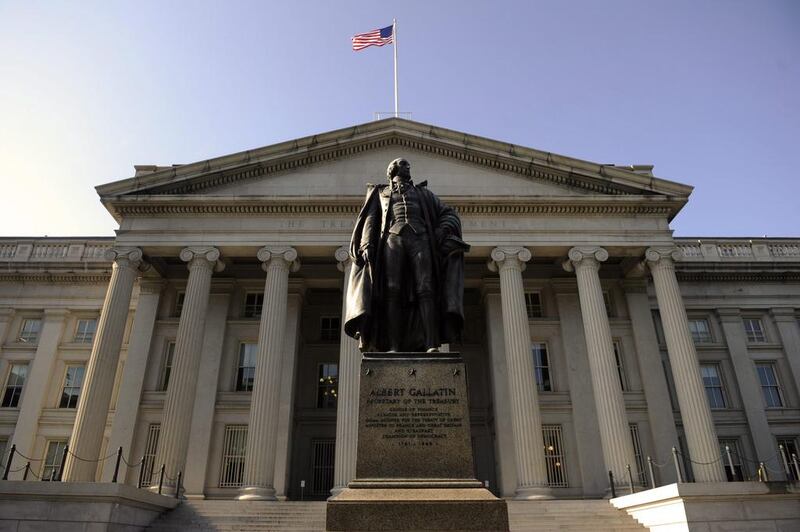US equities responded to the Trump presidency with euphoria. The Dow Jones Industrial Average rose 25 per cent in 2017, becoming one of the best-performing global asset classes. It was a different story with US Treasuries: the yield on 10-year notes fell slightly from 2.4 per cent at the end of 2016 to close at 2.4 per cent in 2017 . And the spread in yield between two-year and 10-year notes, often a signal of slowing growth or forthcoming recession, plunged from 125 basis points to 51.8 basis points at year-end 2017.
As they receive different messages from equities and Treasuries, investors should pay particular heed to the bond market in making asset-allocation decisions for 2018. Treasuries have been a better predictor of the two recessions in the 21st century - the first lasted from March to November 2001, and the second from December 2007 to June 2009. In the case of the latter, yields plunged during the months before the recession whereas equities remained strong well into the first half of 2008 when the economy was already in a downturn.
There is good reason to believe Treasuries are sending a warning now.
______
Read more:
What does 2018 hold for your investment portfolio?
The 12 top mutual funds to buy now
A guide to bond funds - what they are and who needs them
______
The bond market's sense of caution in 2017 was not assuaged by the successful passage of the tax bill. While the yield on 10-year notes rose to almost 2.5 per cent on December 20 when it became clear the measure would pass and get president Trump's signature, it fell subsequently, closing the month little changed.
The surge in equities stemmed from corporate earnings that exceeded consensus estimates in recent quarters and, lately, the reduction in the corporate tax rate to 21 per cent from 35 per cent. Nonetheless, the decline in bond yields signals the surge in equities may not be accompanied by faster economic growth or a significant pickup in inflation.
Narrower spreads between two- and 10-year Treasuries also reflect speculation that the Fed’s stated objective of raising the federal funds rate three times in 2018 may not be met. If the economy slows significantly after an initial burst of optimism over the tax cuts, the 10-year yield is likely to fall further even as the two-year yield rises with Fed tightening, eventually resulting in an inverted yield curve. Yield curve inversion was the harbinger of recessions in 2001 and 2007 to 2009.
While recessions have always been preceded by the two- to 10-year spread going negative, a negative spread has not always ended in a recession. For example, the inversion of the yield curve in May through June 1998 did not deter gross domestic product from rising in inflation-corrected terms by more than 3 per cent in 1999 and during the first half of 2000.
This has led some market watchers to suggest that a potential negative spread should not be a source of concern. There are several reasons I disagree with this sanguine view.
First, wage growth remains anaemic despite the quintupling of the Fed’s balance sheet since the financial crisis and the still-low interest rates almost 10 years later. This may not be offset by the recent tax package. Non-partisan institutions such as the Congressional Budget Office have calculated that the benefits of the tax cuts are tilted heavily in favour of upper-income earners who are not major consumers. Consumption accounts for about two-thirds of US GDP.
Second, the new regulations incorporate reduced government spending on health care. This will discourage consumption by low-income and elderly Americans even as lower tax rates are intended to increase spending.
Third, a pickup in economic growth is contingent on companies responding to the lower corporate tax rate by hiring more workers and increasing their wages. Global competition from low-cost producers will limit US companies’ ability to achieve these goals, and stock buybacks and increased dividends are the more likely outcome. That is why the recent surge in equity prices is a logical outcome even as inflationary expectations remain low, resulting in lower bond yields.
To summarise, as investors consider where markets are headed in 2018, they should be especially mindful of the message from the bond markets. From their current lofty valuations, equities cannot keep rising for long if bond yields and the economy do not co-operate.
Komal Sri Kumar is the president and founder of Sri Kumar Global Strategies, and the former chief global strategist of Trust Company of the West






